Last updated: May 16, 2023
My granddaughter labels every pony a baby horse; when I correct her, she always asks, “what the difference.” It’s not as straightforward as size alone. Uncovering these differences takes us on an interesting journey into the world of equines.
There are numerous differences between ponies and horses; ponies can’t be taller than 14.2 hands, but horses can; ponies have thick coats, manes, and tails, while horses’ hair is more delicate. Ponies are easy keepers and have broad chests and short heads, and horses are more fragile and refined.
But it’s not all about differences. Their shared traits and common lineage also paint a fascinating picture. Stick around as we embark on a journey to explore the intriguing similarities and differences between horses and ponies.
Basic Definitions
Before we journey further, let’s clarify our terminology – ‘horse’ and ‘pony.’ Contrary to common misconceptions, the distinction isn’t as simple as adult and child or big vs. small, and it’s essential to debunk a prevalent myth at this point – a pony is not a baby horse. Understanding this sets the stage for a deeper exploration of these remarkable equines.


What is a Horse?
A horse is a large domesticated mammal belonging to the species Equus caballus. They’re known for their strength, speed, and endurance. They typically stand taller than 14.2 hands (about 57 inches) high at the withers (the highest part of the back, located between the shoulder blades). Horses have been used for centuries for various purposes, such as transportation, farm work, and sports.
What is a Pony?
Now picture a smaller, sturdier animal, standing not more than 14.2 hands high but packing a punch in terms of strength and adaptability. That’s a pony, a fellow member of the Equus caballus species. They stand out with their thicker coats, manes, and tails, and proportionally larger heads and shorter legs compared to horses.
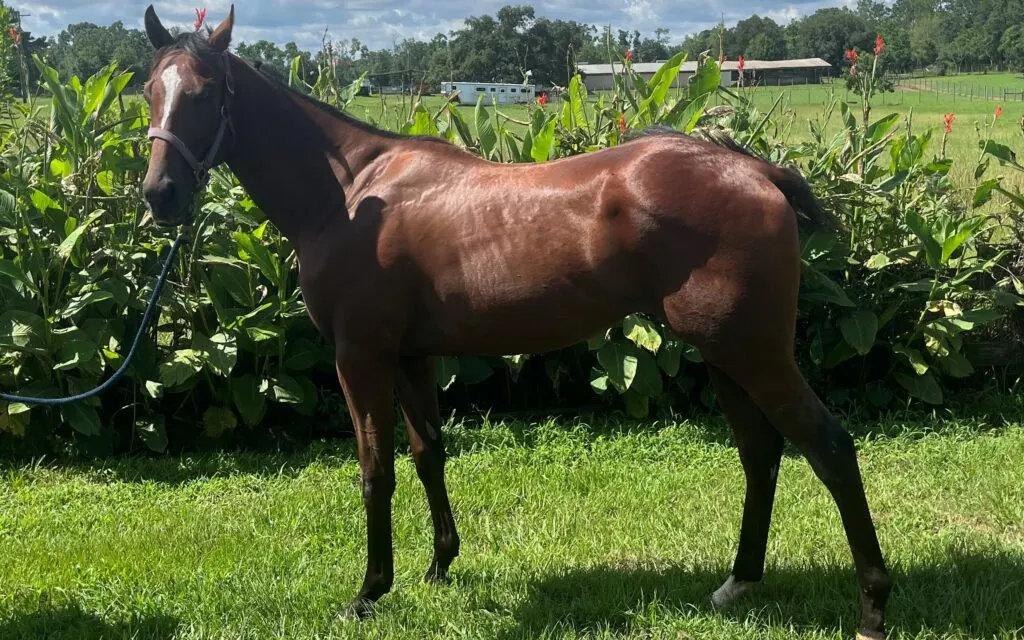
Physical Differences Between Horses and Ponies
Let’s now shift our focus to the physical characteristics of horses and ponies. It’s here, in their size, structure, and even the texture of their coats, that the differences become really clear. As we examine these physical traits, you’ll begin to appreciate the unique adaptations each has made to thrive in their specific environments and roles. So, let’s take a closer look.
Size and Stature
Let’s start with the most obvious difference: size and stature. A horse typically stands taller than 14.2 hands, whereas a pony doesn’t exceed this height. Horses also tend to have a more elongated build, giving them a streamlined appearance. Ponies, while smaller, are compact and sturdy, designed for strength and endurance in harsh environments.
Bone Structure and Body Shape
Take a closer look, and you’ll find differences in bone structure and body shape. Horses have a lighter bone structure suitable for speed and agility. They also have a more defined and muscular body shape. Ponies, on the other hand, possess a robust bone structure that contributes to their remarkable strength. Their bodies are stockier, often with broader chests and shorter legs.
Coat and Mane
Lastly, let’s touch on their coats and manes. A horse typically has a finer coat and a smoother mane, aligning with their overall sleek profile. Ponies, true to their hardy nature, boast a thicker coat and a more abundant mane, providing them with necessary insulation from harsh weather conditions. The same is true for their tails, where ponies often have denser hair compared to horses.
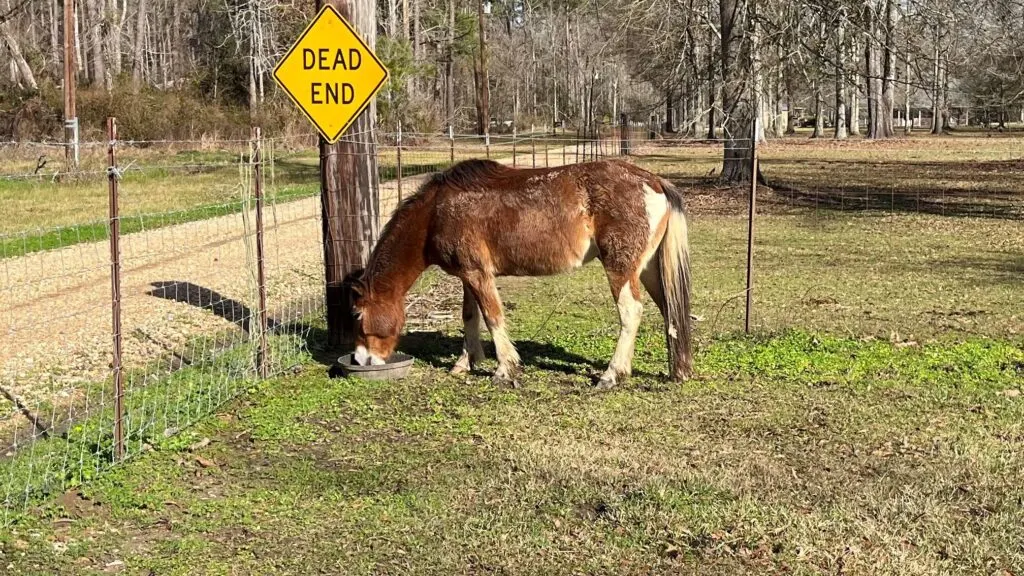
Temperament Differences
Now, let’s move beyond the physical and dive into the realm of behavior and temperament. Just as humans have different personalities, so do horses and ponies. Their unique behaviors are shaped by centuries of adaptation to various roles and environments. From their general demeanor to their social habits, understanding these differences is key to fostering a positive relationship with these remarkable creatures.
General Behavior of Horses
Horses are generally known for their calm and gentle demeanor. They are often seen as more predictable and easier to train, which makes them a popular choice for riding and equestrian sports. However, horses also have a strong fight-or-flight instinct and can be easily spooked. They are social animals, preferring the company of other horses, and they form strong bonds with their human caregivers.
General Behavior of Ponies
Ponies, on the other hand, are known for their stubborn yet clever nature. This can make them a bit more challenging to train, but their intelligence also means they can be quick learners. They are hardy and adaptable, often more so than horses, and can handle a variety of conditions.
Like horses, ponies are also social creatures and form strong bonds with both their equine companions and humans. However, they have a reputation for being more independent than their larger counterparts.
| Characteristic | Horse | Pony |
|---|---|---|
| Height | Over 14.2 | Under 14.2 |
| Coat and Hair | Fine | Coarse, thick coat, thick mane, and tail |
| Head and Neck | Long head and neck with large ears and eyes | Short head and neck with large eyes and tiny ears |
| Body | Proportionate | Stocky and broad, round chest |
| Legs | Long | Short legs with hardy hooves |
| Feeding | Varies by breed | Easy keepers |
| Bone | Varies by breed | Thick, dense bones |
| Temperament | Varies by breed | Intelligent, friendly, but can be cunning |
| Origins | Varies by breed | Cold European Climates |

Similarities between Horses and Ponies
While the differences between horses and ponies are intriguing, their similarities are equally fascinating. Despite their size and physical distinctions, they share common traits that underscore their shared lineage. In this section, we’ll uncover their commonalities, which include lifespan, diet, and social behavior.
Lifespan
Both horses and ponies boast impressive lifespans compared to many other domesticated animals. With proper care, both can live well into their twenties and even thirties. Ponies often have a slight edge in longevity, living a few years longer on average than horses.
Diet
When it comes to diet, horses and ponies share similar nutritional needs. Both are herbivores, primarily grazing on grasses. Hay, grains, and occasional treats like fruits and vegetables supplement their diet. However, due to their robust nature, ponies can often thrive on less nutritious vegatation than horses.
Social Behavior
Lastly, both horses and ponies are social animals. They thrive in herd environments and form strong bonds with their companions. They also interact well with humans, making them excellent companions. Whether it’s a horse or a pony, their capacity for connection and interaction contributes greatly to their charm.
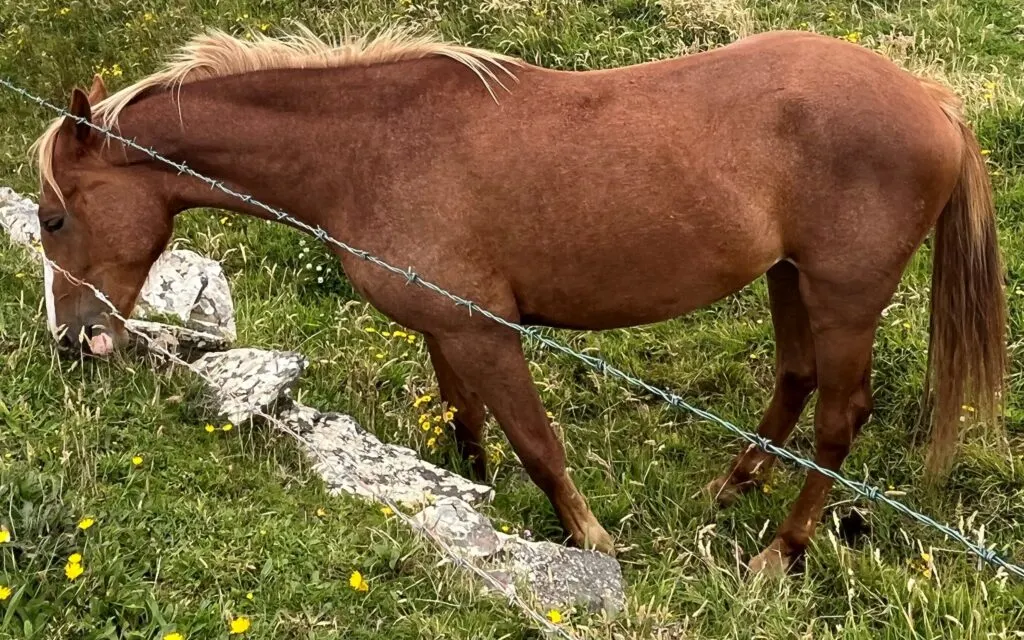
Pony or Horse? Equines that Don’t Fit the Stereotype
It’s not unusual to find horse breeds resembling ponies or pony breeds displaying horse-like traits. Ultimately, the “horse” or “pony” designation often lies with the breed registries. Let’s delve into some breeds that inhabit this fascinating gray area, defying straightforward classification as horse or pony.

Icelandic horse breed (Under 14.2)
The Icelandic horse breed’s average height is 13.5 hands, and we know that ponies are under 14.2 hands. So why are Icelandic horses, not ponies? The answer isn’t clear. But the Icelandic people consider their breed horses, not ponies.
In support of their position, they urge the equines’ genetic makeup, intelligence, and strength, which they say all point to these animals being horses. Scandinavian Vikings introduced their ancestors to the present-day Icelandic horses on the island.
Genetic testing of the breed links them to Mongolian horses and also reveals ties to pony breeds such as the Shetland, Highland, and Connemara ponies, Icelandic horses are unique. For one thing, they are likely the purest breed in the world. Over a thousand years ago, the government restricted the importation of horses to the island, thereby limiting breeding to only the horses on the island.
Icelandic horses have five gaits. Walk, trot, and gallop are standard in all horse breeds, but they also have two more speeds: tolt and flying pace. Horses executing these different gaits at expert levels are highly desired.
Similarities with pony breeds
The Icelandic horse breed is hardy, and they live a long time. It’s common for these small horses to live in their 40s, and some live more than 50 years.
The Icelandic horse is spirited with a gentle temperament and is not easily spooked. Iceland doesn’t have natural equine predators; because of this, the animals have a calm demeanor and are approachable. The attributes of Icelandic are seen in ponies and horses.

Fjord horse (under 14.2)
The Fjord horse is a small ancient horse breed from Norway, where they have resided for over 4,000 years. Fjords range in size from 13.2 to 14.2 hands, with few outliers. Fjords are versatile horses that make good draft horses and riding horses. They have a few unique features. All modern Fjords have the Stallion Njal 166 in their pedigree, and he was born in 1891.
Ninety percent of all Fjord horses are dun, and most have thick upright manes. Another exciting feature is they exhibit primitive markings, and their manes have a dark center line resembling a stripe. Traditionally, owners of Fjord horses clip their manes, making them easier to care for and exposing their distinct stripes.
Pony similarities
It’s not only their short stature that Fjords have in common with ponies. The Fjord horse has a thick coat that protects against the rough winters in the cold mountainous regions of Norway. The texture and thickness of their hair resemble ponies; it’s thick, and their mane and tail long and coarse.
Much like a pony, the Fjord horses are hardy, strong, and easy keepers. They have the build of a draft breed but are much shorter than standard draft horses. The Fjord horses’ bone structure is compact and thick, similar to ponies, and despite their small stature, they have superior levels of strength.
Fjords, like ponies, are “easy keepers.” They gain weight quickly and thrive on relatively little food. They are also prone to develop obesity-related metabolic problems if overfed, such as colic and laminitis.
I can’t fully grasp the reason Fjord horses aren’t Fjord ponies. They meet more of the characteristics of a pony than a horse. But attributes of both ponies and horses are present in Fjord horses.

Haflinger Horse Breed (under 14.2)
Haflingers are a versatile horse breed used for pulling carts, endurance riding, and even dressage. They typically stand between 13 and 15 hands tall.
Similarities with ponies
Besides their small stature, Haflingers share other characteristics with their pony cousins. They typically have thick coats and long manes and tails. They originated in the colder climates in the region of upper Italy and Austria.
They are also powerful, and these small animals have no problem easily carrying a full-sized rider or a loaded wagon. Haflingers are intelligent and like ponies; they act stubbornly and become challenging to work when guided by an inexperienced hand.
Horse characteristics
The difference between a Haflinger and a pony is their conformation. A Haflinger exudes proportion and strides in rhythm while displaying good power from their hindquarters. Add their movement to the Haflinger color, which looks like a horse. (All Haflingers have chestnut coats with flaxen manes and tails.) Traits of ponies and horses are in Haflinger horses.
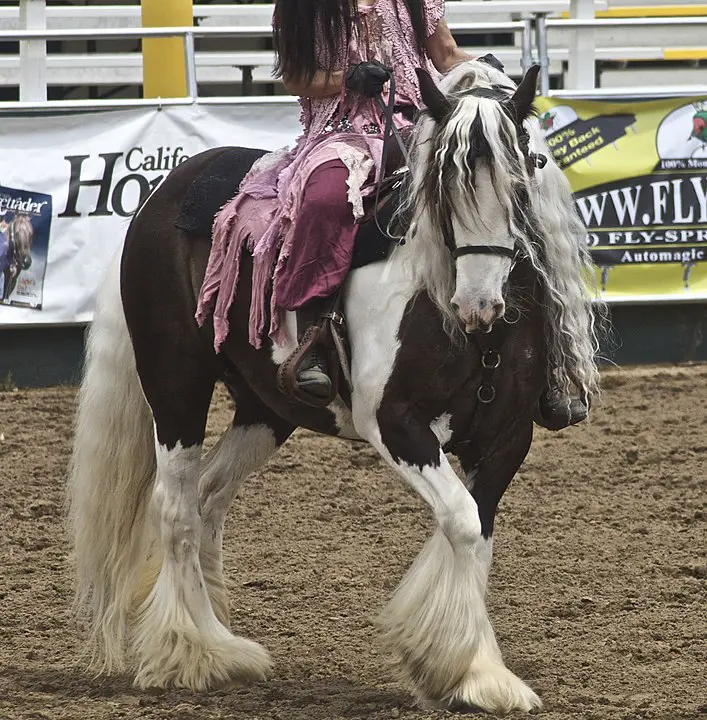
Gypsy Vanner (under 14.2)
Gypsy Vanners are a small equine draft breed, just like many pony breeds. They span in height from 12.2 to 16 hands, with an average of the breed standing 14.2 hands tall. Because of the size differences, the horses are divided into three categories.
Horses under 13 hands are called minis, horses up to 15 hands are considered classic Gypsy Vanners, and horses over 15 hands are called grand-sized Gypsy Vanners. The Gypsy Vanner originated in Ireland and was refined by European Gypsies. These unique horses are also called Irish Cob and Gypsy Cob. But regardless of their name, they are beautiful and reliable horses.
Pony similarities
Besides their small size, the Gypsy Vanner has a thick coat similar to many pony breeds. They also have a gentle, cooperative temperament and are intelligent. The Vanners are strong and work well as a small draft breed primarily used to pull small wagons called a vardo. The vardo was the Gypsy’s home and contained all their possessions.
These horses were working animals and an integral part of the Gypsy family. Features of ponies and horses are visible in Gypsy Vanners.
Horse characteristics
Gypsy Vanners look like horses; their necks are long, and they hold their head high. Their bodies are in proportion and level from withers to tail poll. Overall they are well-balanced and present a harmonious blending of muscle and bone.

Yakutian Horse (under 14.2 hands)
The Yakutian horse looks like a short, thick, and furry stuffed animal. The average height of a Yakutian horse is 13 hands, which is below the size of a standard horse. They can survive without shelter in the frigid climates of Siberia, where temperatures reach -95 degrees Fahrenheit.
Pony similarities
Yakutian horses have the outward appearance of a pony. They are short and have thick, sturdy statures. Also, their neck is short and straight again, like many pony breeds. Yakutia grows thick winter coats and long manes and tails to protect against the freezing temperatures of their homeland, where winters can last eight months. Some of the hair on their coat extends three inches in length.
Yakutian horses are hardy and used to pull sleighs filled with ice. They are also “easy keepers” and can survive on minimal forage. They are known to find grass buried under deep snow with their exceptional sense of smell. In the harshest winters, the diet is supplemented with feed by the local Sakha people.
The Yakutia horse gives back to the local people by providing milk and as a source of meat. The Sakha people use the horse’s hides and hair to make and decorate clothing. Although they look like pony, the Yakutia has traits of ponies and horses.

Hackney Pony
Hackney ponies are shorter than 14.2, but they look like a horse. They don’t have thick bones, nor do they have thick coats. In the following picture, the animal looks like a small horse. The Hackney pony was initially developed to pull small carriages. They originate from a cross between a Hackney sire and a Fell mare. The breed registry emphasizes that the ponies not exceed 14.2 hands and maintain pony characteristics.
Hackney ponies have a vibrant show competition. These ponies compete in harness and saddle competitions. However, the emphasis seems to be on the harness. They have six divisions of harness exhibition, including pleasure driving, roadster, and cob tail. Each year they hold their world championship competition at Kentucky’s state fair.
Maybe because of the emphasis on speed and showing these animals, they’ve lost the look of a pony. Besides the healthy hooves and a small head, not many pony characteristics remain in the breed.
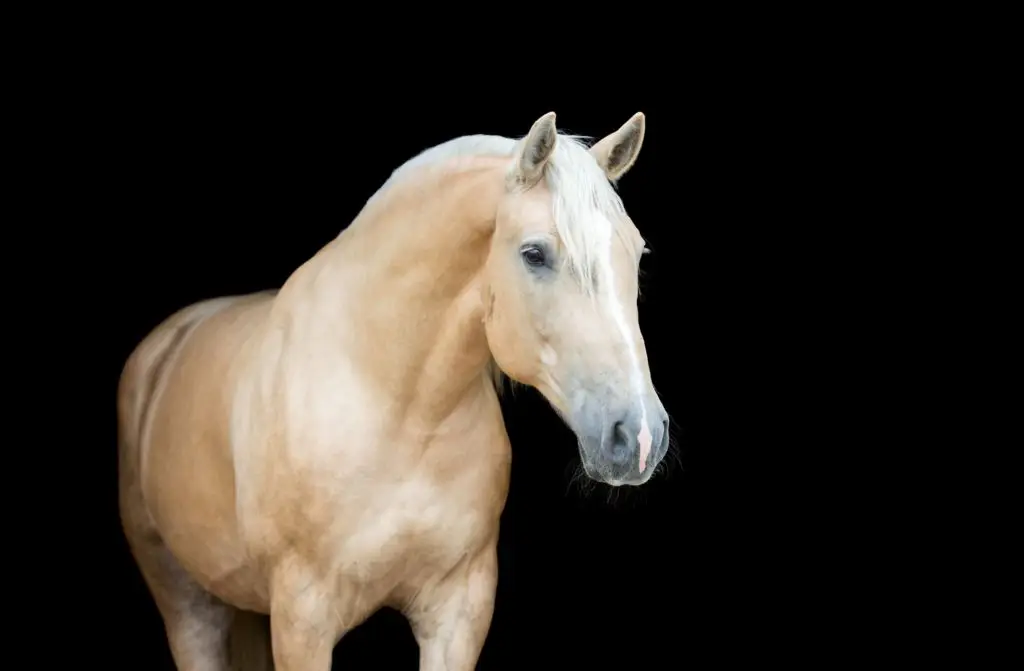
Welara Pony
The Welara pony breed was established in the United States in 1981. However, the breed originates in England from crossbreeding Arabian horses and Welsh ponies. They are palomino ponies that range from 11.2 hands to 15 hands tall. They have refined bones, thin coats, and lean bodies, more reflective of their Arabian ancestors than their thicker Welsh relatives. Overall, these ponies, like the Hackney ponies, resemble a horse more than a pony.

Camargue horse
The average Camargue horses are under 14.2 hands tall. This breed is roots trace back to ancient France, where they lived in the wild marshes and wetlands. These small hardy horses always have a gray coat color and black skin.
Pony similarities
Much like a pony, the Camargue horse is powerful in relation to its size. They have a compact build, with strong limbs, a short neck, and a deep, rounded chest. They can easily carry grown adults. The animals have large bones, small ears, and strong hooves like many pony breeds. They are also brilliant and not patient with inexperienced handlers.
Horse similarities
The Camargue horse has long legs and a proportionate body. Their backs are medium length, and they have well-muscled hindquarters. Besides the small ears, their head resembles a horse. The Camargue could pass for either species of equine; it has characteristics of both ponies and horses.

Konik horse (under 14.2)
Konik horses are an ancient breed from southeast Poland; however, their ancestry isn’t apparent. But what is even muddier is whether they are a pony or horse. Konik displays the traits of ponies and horses.
Pony similarities
These equines have a stocky build with a deep barrel-type chest. Their heads are small, and they have thick coats with long coarse manes and tails. The typical Konik horse is between 12.3 and 13.3 hands tall.
They are strong for their size and are often used as draft horses. These horses fit the mold of a pony, so why are they considered a horse? My only guess is that the breed registry didn’t want to label them as ponies.

Appaloosa horses
Appaloosa horses are often called Indian ponies. However, most are over 14.2 hands tall and have characteristics that align them with horses. The use of Indian pony is just slang and not related to actual breed characteristics.
Appaloosa has a colorful spotted coat pattern that makes it easy to distinguish. It’s difficult to gauge how long they’ve been in existence precisely, but depictions of them were etched in the walls of caves in France during the stone age.
Modern Appaloosa horses originate from the Nez Perez tribe in the northwestern United States. The Native American tribe selectively bred horses to obtain treasured traits: color, stamina, and sturdiness; the final result is the Appaloosa horse.

Kentucky Mountain Saddle Horses
Kentucky Mountain Saddle Horses are short horses but don’t resemble ponies. As you can see from the picture above, they look like a horse. They have light bones and finer coats than most pony breeds. Besides their similar height to ponies, the only other common trait is that Kentucky Mountain Saddle horses are “easy keepers.”
To register a Kentucky Mountain Horse, it must be above 11 hands tall. Horses over 14.2 are categorized as Class A horses, and ones between 11 and 14.2 hands are considered Class B horses. The breed is related to the Tennessee Walking horse and is gaited. They were developed to work on farms and as comfortable riding horses for transportation. They are sure-footed horses and are primarily used for pleasure riding.

Popular Pony Breeds
Shetland Pony
Shetland ponies originated from the harsh Shetland islands off the northern coast of Scotland. It’s a frigid rugged island. They may only have three months of the year frost-free. Shetland ponies’ roots run deep on the islands; there’s evidence of their existence going back four thousand years. In the mid-1800s, the island ponies began to be used in British coal mines.
These animals were ideally suited for the tasks, and they were small enough to easily navigate tunnels yet strong enough to pull carts burdened with heavy loads of coal. Today Shetland ponies are popular first mounts for children. They range in height from 7 hands to 11 hands tall. The most common size is ten hands.

Welsh Ponies
Welsh ponies come in many different shapes and sizes. Some are taller than 14.2 hands, and others may be close to 11 hands tall. The differences can also be seen in the density of their coats. The following three pictures are of Welsh ponies/cobs.
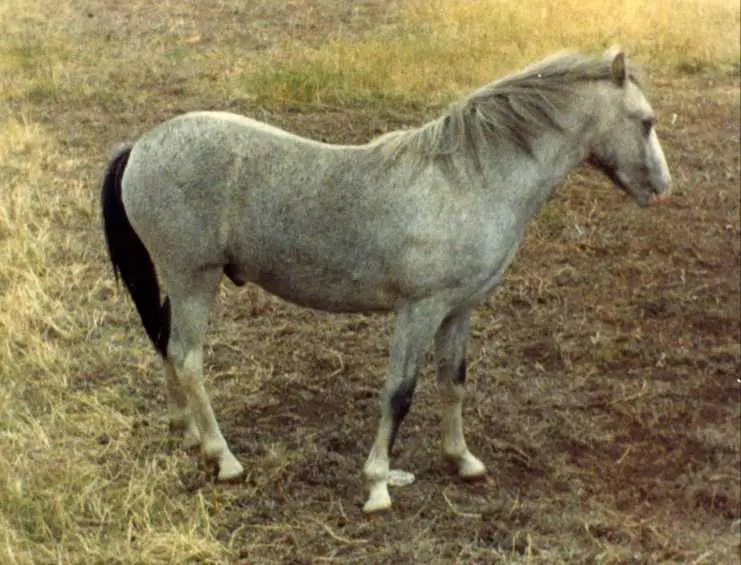
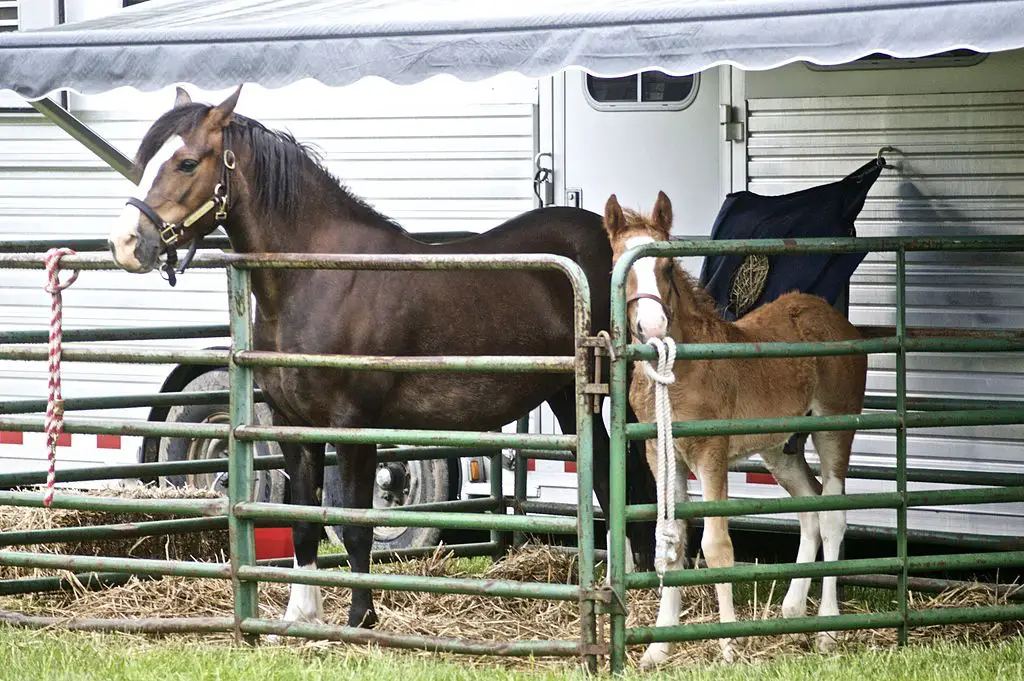
Because of the disparity between the animals, they are divided into classes within the breed. These classes are primarily sorted by height and called either Welsh ponies or Welsh Cob horses. Welsh ponies’ roots are in Wales, where they’ve lived since 1600 BC.
The native ponies were crossbred to Arabian, Thoroughbreds, and Hackney horses in the Middle Ages to create the Welsh cobs. They’ve been productive in many equine activities because of their various sizes, including trail riding, show jumping, and farm work.

Connemara pony
The Connemara pony is excellent for trail riding. The typical Connemara stands between 12.2 and 14.2 hands tall. Although small, they are robust and surefooted enough to easily carry full-sized adult riders.
The early Connemara ponies were hybrid offsprings of Spanish horses and local Irish mares. However, today’s ponies likely include Arabian, Thoroughbred, and Hackney bloodlines. (https://www.acps.org/)

Fell pony
Fell ponies vary in height from 13 hands to 14 hands tall. They are a versatile breed that originates from northern England. Like many other pony breeds, the Fell pony is known for its strength, sure-footedness, and endurance.

Pony of the Americas
The Pony of the Americas (POA) is a pony breed that originated in the U.S. in 1954. The foundation stud was the offspring of a cross between a Shetland pony stallion and an Arabian/Appaloosa mare.
The Pony of the Americas breed registry limits pony heights to between 11.5 and 14 hands tall. Another breed requirement is coloring; they must have an Appaloosa pattern you can distinguish from 40 feet.
Below is a YouTube video that explains the differences between horses, ponies, and miniature horses.
FAQ
Is a pony a different species than a horse?
Ponies and horses are members of the Equus caballus species and have a lot of common traits. The breed registries decide if an animal should be classified as a pony or a horse. Classification is not always based on the height of the equine.
Can a horse give birth to a pony?
Are ponies easier to ride than horses?
Horses are generally easier to ride than ponies and are more comfortable and responsive. Ponies can be too high-spirited or stubborn for some people to handle.
Meet Miles Henry
An avid equestrian and seasoned racehorse owner, Miles Henry brings his extensive experience to the equine world, proudly associating with the AQHA, The Jockey Club, and various other equine organizations. Beyond the racetrack, Miles is an accomplished author, having published various books about horses, and is a recognized authority in the field, with his work cited in multiple publications.
🔗 Connect with Miles:
Twitter
Facebook
YouTube: Check out race highlights, horse care tips, and more!

